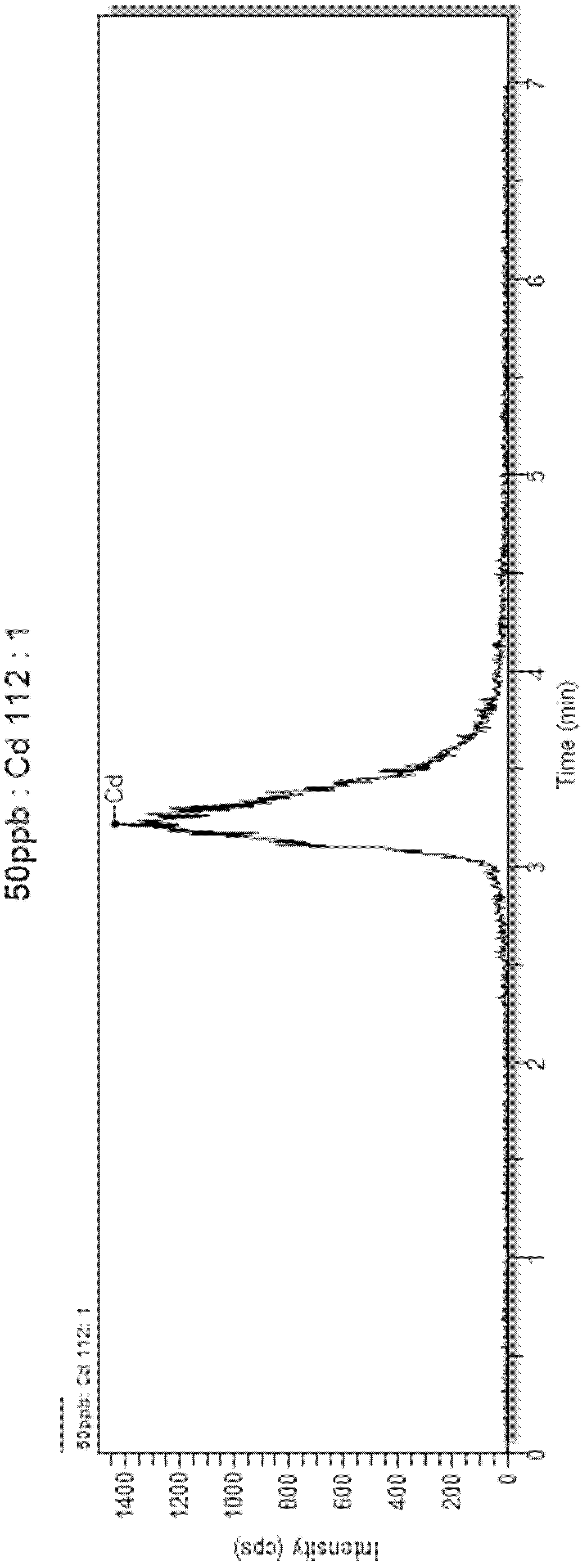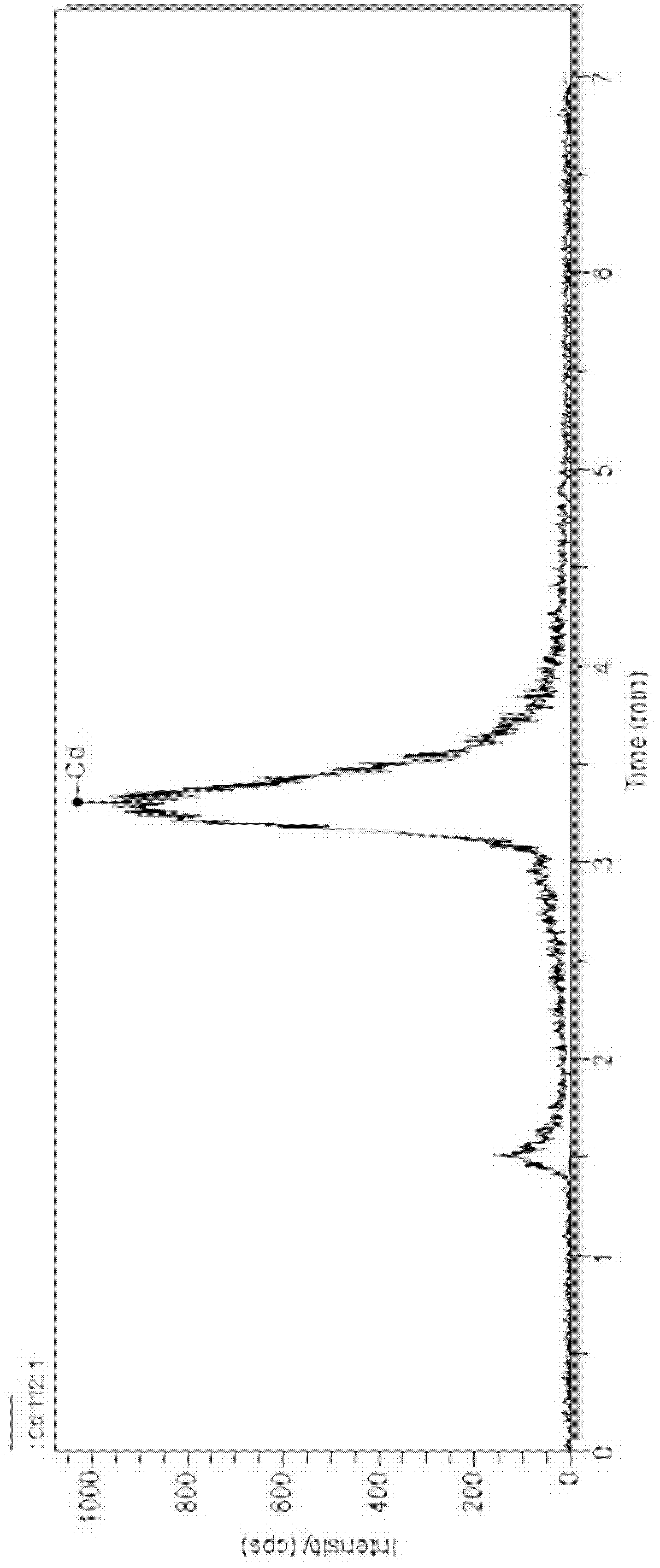Method for detecting divalent cadmium ion in aquatic product by using HPLC-ICP-MS coupling technique
A technology of HPLC-ICP-MS and combined technology, applied in the field of aquatic product detection, to achieve the effect of accurate and reliable detection data, accurate scientific quality and safety, and reasonable selection of experimental conditions
- Summary
- Abstract
- Description
- Claims
- Application Information
AI Technical Summary
Problems solved by technology
Method used
Image
Examples
Embodiment 1
[0050] Embodiment 1: the mensuration of divalent cadmium ion i.e. Cd(II) in scallop:
[0051] 1. Instruments and equipment used in this embodiment: HPLC-ICP-MS combined system:
[0052] (1), HPLC (Perkin-Elmer, USA, model Series 200) part: use SERIES200 high-pressure liquid phase pump, equipped with automatic sampler, equipped with guard column CG5A 4 × 50mm and CS5A 4 × 250mm cation of the same material filler exchange column;
[0053] (2), ICP-MS (Perkin-Elmer, USA, model ELAN DRC II) part: equipped with dynamic reaction cell, automatic sample injection system, radio frequency generator, plasma system, Chromera speciation analysis automatic processing interface, ion lens System, quadrupole, vacuum system, detector, gas path control system;
[0054] (3), cooling circulating water (US POLYSCIENCE company, model SHA-C);
[0055] (4), Vortex mixer (IKA MS 3 basic);
[0056] (5), pure water system (Millipore, USA, Milli-Q Gradient A10);
[0057] (6), circulating vacuum sand ...
Embodiment 2
[0089] Embodiment 2: to the mensuration of Cd (II) in laver:
[0090] Weigh 1.000 g of the crushed and dried seaweed sample and place it in a 50 mL plastic graduated centrifuge tube with stopper, add 40 mL of water and mix well. Ultrasonic extraction for 40min, centrifugation at 8000r / min at 4°C for 10min, the supernatant was taken out and filtered with a 0.22 micron water-based microporous membrane, and the value of Cd(II) in the extract was measured on a computer. Other conditions are the same as those of scallops and oysters.
[0091] The standard recovery rate test of the samples in laver showed that the standard recovery rate was 91.2%, and the relative standard deviation was less than 5%, which met the analysis requirements. The determination results of divalent cadmium ions in laver are shown in Table 2.
[0092] Table 2, the assay result of laver spiked recovery (on a dry basis)
[0093]
[0094] In order to ensure the accuracy and reliability of the experimental ...
PUM
 Login to View More
Login to View More Abstract
Description
Claims
Application Information
 Login to View More
Login to View More - R&D
- Intellectual Property
- Life Sciences
- Materials
- Tech Scout
- Unparalleled Data Quality
- Higher Quality Content
- 60% Fewer Hallucinations
Browse by: Latest US Patents, China's latest patents, Technical Efficacy Thesaurus, Application Domain, Technology Topic, Popular Technical Reports.
© 2025 PatSnap. All rights reserved.Legal|Privacy policy|Modern Slavery Act Transparency Statement|Sitemap|About US| Contact US: help@patsnap.com



